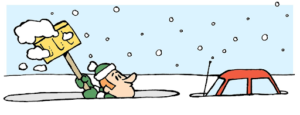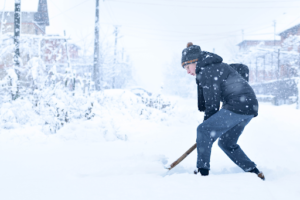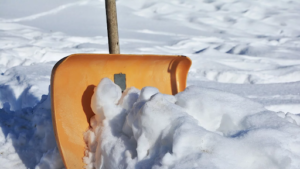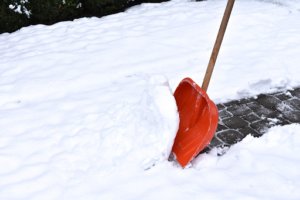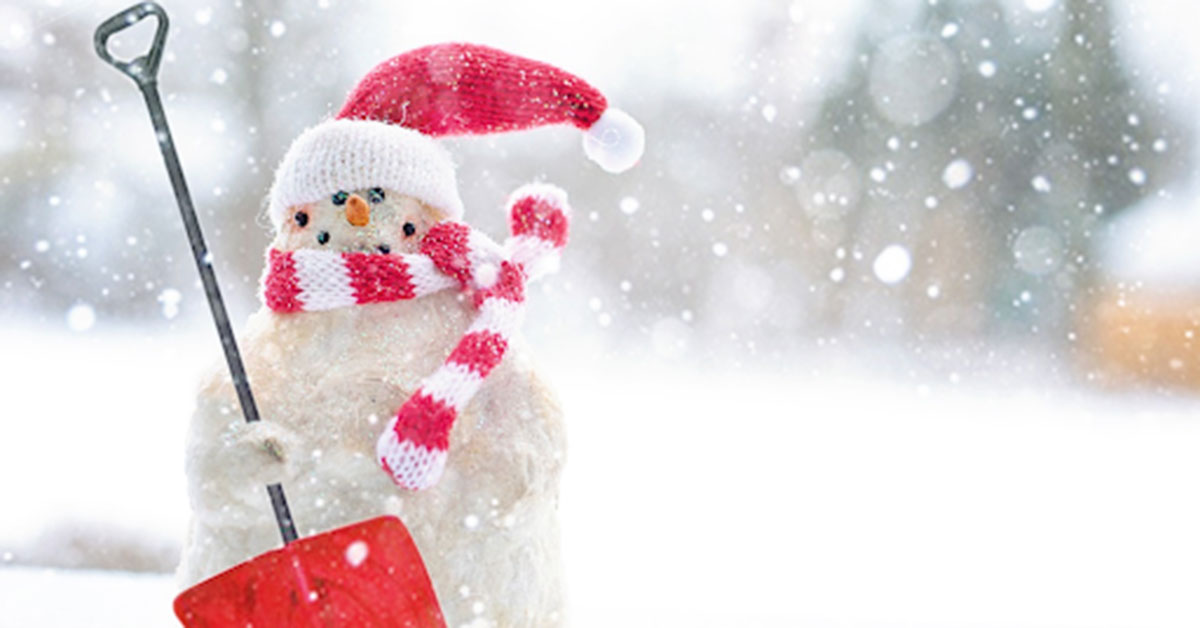
Every year over 11,000 people are treated in emergency rooms for injuries related to shoveling snow. People throw their backs out, slip while walking on ice, and even suffer heart attacks. Many more people sustain injuries that don’t require emergency attention, but that can end up causing long term pain.
Most of the country is in for a snowy winter this year, and we all know that clearing our walks of snow is necessary (and required by law), so how do you do it safely? Here are five tips on how to clear snow without getting injured:
Use Common Sense
Please, please, don’t try to use your snowblower on your roof! People have actually died trying to do this. If the snowpack on your roof has it in danger of caving in, there are better ways to handle the problem. Try using a long-handled plastic snow shovel that can reach the roof while you stand on the ground or a step stool. Better yet, hire a professional snow removal company.
Common sense also applies to clearing your driveway and walkways. If you have preexisting back or heart problems, you’ll be better off bribing a neighbor kid to clear your driveway. Be honest about your physical fitness level. If you’re out of shape, you may need to take more frequent breaks or lift lighter loads.
Align your Spine
When shoveling snow or pushing your snowblower, make sure to keep your spine in a neutral position. This means that your head, neck, back, and tail bone should line up with one another. Bend your knees and hinge at your hips instead of rounding your back or hunching your shoulders forward. Engaging your core muscles can help to stabilize your spine and protect it from injury. To do this, pull up from the pelvic floor–the same motion you do when trying to hold in urine– then suck your tummy in. Once your midsection feels nice and tight, you’re good to go.
Don’t ever twist while throwing aside snow. This can lead to a back injury. Instead, throw snow away from you diagonally or turn your whole body to the side. It’s also a good idea to switch off which arm you are leading with. This will prevent you from overstraining one side of your body.
Use The Right Tools
Snow shovels that have a curve in the handle are more back-friendly that straight handled ones because they prevent you from hunching over. Depending on your height, you may need a shorter or longer handle to remain in an ergonomic position while shoveling. Choose a shovel that allows your spine to stay in that neutral, aligned position. A shovel with a sharp edge on it can make removing packed snow or ice easier, but if your shovel is metal, make sure it’s not too heavy for you to use.
Using a snowblower might seem like less strain that shoveling, but it is still a heavy piece of equipment that you are maneuvering through the snow. Be sure to choose a snowblower that isn’t too heavy for you to use safely. If you feel like you are straining to push it or if you become exhausted very quickly after starting to use it, you should choose a lighter model. If your blower gets clogged, turn it off and then clear it. If it gets stuck in a thick patch of snow, it will probably be safer for you to use a shovel to clear its way rather than straining to push it through.
Have a Plan
When a big storm hits, it may be tempting to let it all fall before you start shoveling, but sometimes it’s best to keep up with the snow. If you are supposed to be getting several feet of snow, it will be safer to remove the snow after one foot has fallen than to wait and have to move four feet.
After snow first falls, it is usually lighter and easier to move than snow that has been on the ground longer. Some snowfalls are heavy and wet from the get-go. If that’s the case, move smaller loads at a time so that you don’t strain your back (or your heart). Pushing snow is better than lifting it, especially if the snow is very heavy. If you are pushing snow, don’t start from across the driveway-you’ll end up with a mountain of snow in front of you that you can’t move. It’s best to start a few feet away from the area you will be pushing the snow towards.
Treat it Like a Workout
Because it is! For many people, shoveling snow is the most activity they get all winter. Even if you are active and in good shape, you need to be kind to your body to prevent an injury.
Start by stretching out and warming up, a limber body is less likely to get injured. After your stretch, engage your core muscles, as mentioned above. Dress for shoveling like you would for any winter sport. Wear layers and waterproof shoes that have good tread.
It can be hard to realize that you are becoming dehydrated when you’re working in freezing temperatures, but trust us; you need to drink water while shoveling. Take a break every twenty minutes or so to catch your breath and get a drink. Any time you start to feel exhausted, you should come in and rest until you feel recovered.
There is a sweet spot when it comes to food and shoveling snow (or working out). You don’t want to be hungry or get low blood sugar, but you also shouldn’t be active on a full stomach. Plan your meals accordingly so that you’ll have the energy you need.
If you feel any pain after shoveling snow, don’t hesitate to go to your chiropractor and get checked out. The sooner you get treatment, the less likely it is to become a chronic problem.


